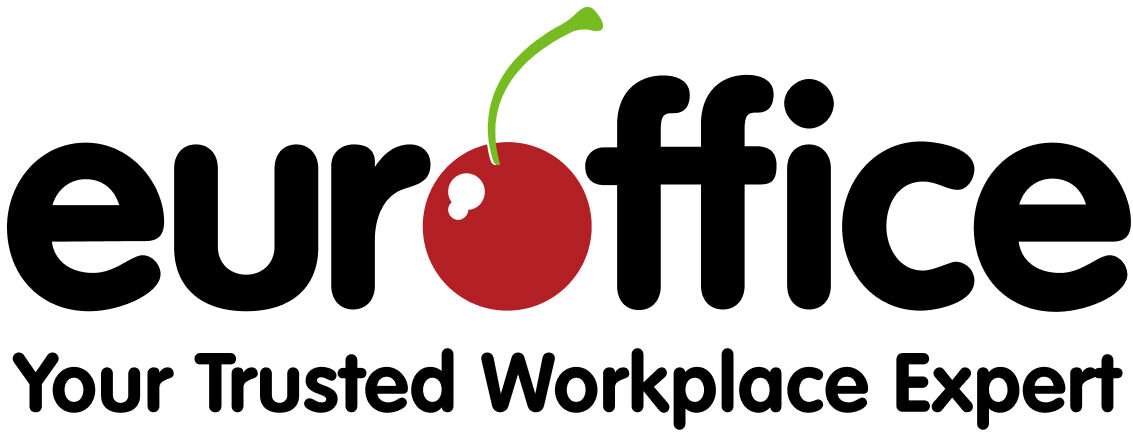Some people say that listening to music whilst working has proven negative effects, whilst others say it boosts concentration and makes you a more effective worker. We’re of the opinion that a bit of background music can be hugely beneficial in the workplace.

As Magnus Rydén, Head of Music at workplace streaming service Soundtrack Your Brand, says: “Playing music in an office space can be a mood booster for sure, but it’s a delicate art and difficult to get right.
“Music impacts our emotions, which in turn affects our behaviour, and if done right, music can help increase productivity and spur well-being, be that in the gym, at the bar, or in the office.”
With that in mind, we’ve asked around and found out some pretty interesting information about the most popular music to listen to, and how to please everyone in the office.
The most popular types of music for the workplace
It’s not uncommon for office groups to have different tastes in music; in fact, it’s to be expected. What is uncommon however, is finding a playlist or album that suits everybody’s needs.
LinkedIn recently partnered with Spotify to reveal the secrets of the office playlist and what the employees thought about sharing music, and found that 73% of people believe listening to music at work makes them more productive.
17% admit to using music to drown out the sounds of their colleagues, and 34% believe music helps them to be more creative; it seems that we love to hear a tune playing whilst we work.
Unsurprisingly, the most common choice for office music is the lovely Ed Sheeran – most likely because of his soft voice and fun take on music. The least popular artist was Eminem, which is understandable as his language is a little cruder than Ed’s and some of his songs can be quite aggressive, which isn’t always appropriate for the workplace.
Pop, as its name suggests, is the most popular genre, with 55% of workers preferring to listen to this kind of music. Country music tends to be the favourite choice in sales teams, with reggae a big hit for marketing professionals.
Magnus Rydén expands further on some considerations for office-based tunes, suggesting “music with vocals can be distracting, so in an office environment we usually suggest instrumental tunes. Well-known tunes can be equally distracting, so rather than spur a sing-along environment, we suggest playing lesser known tunes where the music blends into the larger environment.”
We spoke to some music loving offices to get their thoughts and opinions on the matter, and this is what they had to say.
Arabel Lebrusan’s
Jewellery Team said: “We love to listen to “The XX”, “Submotion Orchestra” and “Sampha” in the studio. They are a great mix between soft rock and electronic music. Sampha just won the mercury prize and it is great for inspiration. At the end of the day the Colombian band “Bomba Estereo” help to get the mood up!”
[sc name=”clear_both”]
Kim O’Meara from K9 Magazine commented: “Our office normally has the radio or a Spotify playlist on in the background, but for some reason since last year I’ve found one particular album helps me to focus so I often listen through my headphones rather than dominate the office with my Danish rock music!
It could be that it’s something to do with the beats – a bit like running, some music allows you to focus better than others, but ‘Seal the Deal & Let’s Boogie’ by Volbeat is an album I’ve listened to more than any other in my lifetime and it’s helped me focus on writing and proofing when I’ve been floundering for focus. No other album draws the same level of attention out of me.”
[sc name=”clear_both”]
How to integrate music without annoying the workforce
When listening to music in the workplace, it always pays to be mindful of fellow employees. To just get up and put music on that the whole office can hear would be considered as rude, so here are our top five tips on how to successfully bring music into your office without upsetting the team.
1. Make sure you ask for their opinions first
As tempting as it may be to throw on your favourite drum and bass playlist, it might not be suitable for the office or everyone’s taste. Have a discussion with your colleagues about having music playing in the office and their favourite radio stations or top genres, so that you can find a channel or playlist that will keep everyone happy.
2. Find speakers to suit your space
If you have a large office, multiple speakers might be needed to evenly distribute the sound. Think about whether you want portable speakers or a stationary set up. Should you be using a Hi-Fi in a communal area or would a smaller sound system stationed at the end of a bank of desks be better? All of this depends on the size and layout of your office space along with how closely people are sat together.
If you decide that a radio is the best option for your office, why not check out the digital radio selection here at Euroffice.
3. Control volume with connected devices
In big offices, the music will need to be fairly loud to reach all of your colleagues. However, this means that the few who are closest to the speaker won’t be able to hear much else. Multiple Bluetooth speakers can be really helpful here, to gently spread the tunes across the room without deafening anyone. Using connected devices such as Sonos is a great way to offer control over the volume. These systems give flexibility by allowing you to alter the volume of individual speakers in different areas, enabling colleagues to regulate the noise in their environment from a central tablet or iPad.
4. Compromise is key to a happy workplace
If you can’t agree on your music tastes, offer a compromise that will benefit you all. Create a communal playlist with a few of everyone’s favourite tracks. You never know, you might learn something new about your colleagues along the way. Alternatively, have set days for different genres such as rock on a Monday or pop on a Tuesday.
5. Make quiet areas available and accessible
Be considerate of those who don’t want to listen to music by making quiet spaces available. If possible, have the quiet area sound proofed, tucked away behind a wall or well out of the way of the speakers. Some jobs require a lot of focus and often people in these roles can find music to be a distraction.
What are the most popular music streaming apps and services?
Streaming has become one of the most popular ways to listen to music, and 67% of us now stream on a regular basis. Spotify leads the way in terms of active users, although 78% of users would prefer to hear an occasional advert than pay for the service. Saying that, as of July 2017, Spotify still boasts an impressive 60 million subscribers.
There are other big players catching up in the market; Apple Music has grown to 27 million subscribers, and SoundCloud boasts 40 million registered users. Deezer, the service with the largest global reach, currently has 12 million active users, 9 million of which pay for the premium version. Deezer’s unique algorithm learns users’ music tastes to create a stream that mixes personalised recommendations with existing playlists. It adapts and updates in real time based on the actions of the user, easing the process of music discovery.
We asked Deezer what they thought the benefits were of music in the workplace and if they feel it has an impact on productivity and mood.

Roman Tagoe, Head of Content and Editorial UK at Deezer, comments:
[sc name=”clear_both”]
“The advantage of working at a global music streaming company like Deezer, is that we get to listen to music all day. There are many known benefits to listening to music in the office, including boosting productivity and improving moods. For challenging days ahead that require a lot of thought and concentration, downbeat music such as chill out or classical playlists can be the most efficient, while for easier tasks on hand, one can listen to Electronic Dance Music (EDM) to elevate one’s mood.”
Businesses that enjoy motivational music in the workplace
We’ve shared the thoughts of the employees in businesses, but what do the big bosses and company owners think?
 Galyna Nitsetska, the founder of Empress Mimi Lingerie said: “’We listen to Brain.FM in our office because we find it significantly increases our team’s concentration and speed of execution – strangely enough, this focus music really works to make you more productive! We find that without this we often end up chatting and getting distracted in other ways. The only downside is that sometimes it gets so intense you can get a headache from being so focused for a prolonged period of time. We first heard about Brain.FM from the Tim Ferris blog and have been hooked ever since.”
Galyna Nitsetska, the founder of Empress Mimi Lingerie said: “’We listen to Brain.FM in our office because we find it significantly increases our team’s concentration and speed of execution – strangely enough, this focus music really works to make you more productive! We find that without this we often end up chatting and getting distracted in other ways. The only downside is that sometimes it gets so intense you can get a headache from being so focused for a prolonged period of time. We first heard about Brain.FM from the Tim Ferris blog and have been hooked ever since.”
[sc name=”clear_both”]
 Barney Hooper of PRS for Music said: “I can’t imagine a day without listening to the music and work would be a drag without the radio on in the background. Some businesses we spoke with allow their teams to choose the music and have different genres on different days or to create their own playlists to ensure they get the right music that works for them.”
Barney Hooper of PRS for Music said: “I can’t imagine a day without listening to the music and work would be a drag without the radio on in the background. Some businesses we spoke with allow their teams to choose the music and have different genres on different days or to create their own playlists to ensure they get the right music that works for them.”
So, there you have it. It seems that the reason for many businesses bringing music into the workplace is because it boosts morale within their teams. Just remember to always be considerate to your other work colleagues.
Do you listen to music in the workplace? Let us know your thoughts and share your favourite office music playlists with us on social media – don’t forget to tag us and use #EurofficeWellness!



